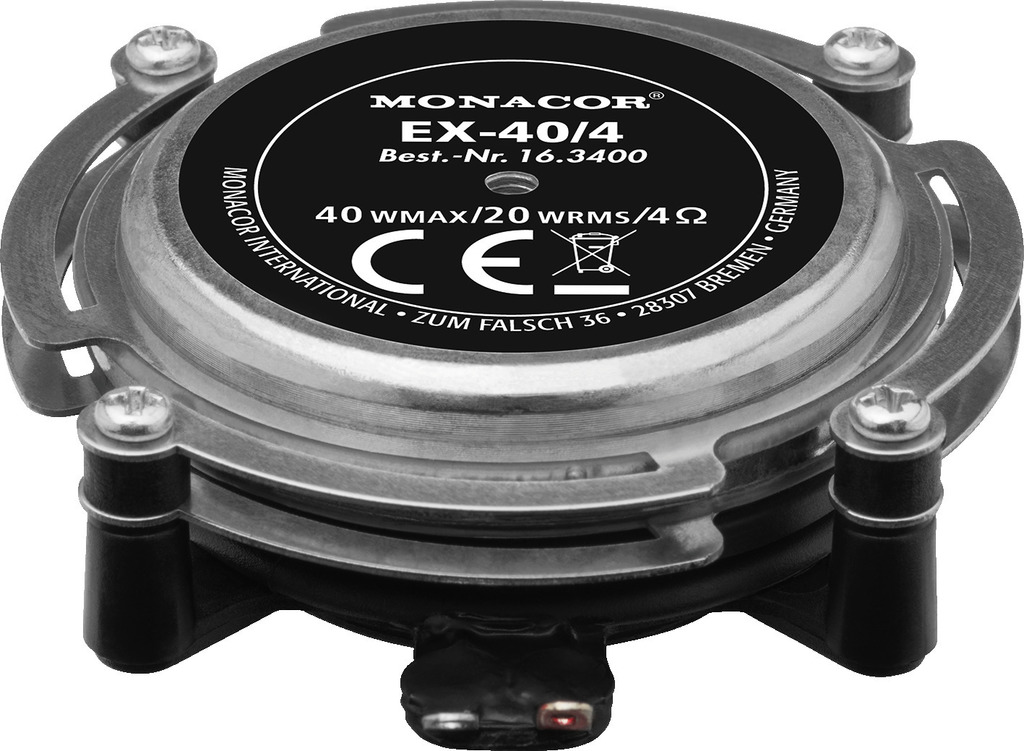
A standard speaker is an electroacoustic transducer, converting electric energy into acoustic energy by vibrating a diaphragm and thus creating pressure waves in the air. Audio exciters (sometimes also called “audio transducers”, “bodyshakers” or “sound actuators”) don’t use a diaphragm to convert energy but every rigid object that you want to use as a speaker. Imagine a speaker without the diaphragm. When connected to an amplifier it starts to vibrate but due to the missing surface the generated waves are not strong. An Exciter is more or less the same but gets directly attached to e.g. a table which replaces the diaphragm, meaning that the whole table starts to vibrate and emit sound. Of course the spectral characteristics of a system like this highly depend on material and shape of the object to which the exciter is attached. But by using equalizers and gathering experience and knowledge about materials, shapes and their acoustic effects you can get interesting experimental and / or aesthetic results.
A very aesthetic use of this technique are planar speakers which use a specially configured plate and exciters to create very thin speakers. The exciter(s) get attached to the plate and filtered to get a good frequency response. Because of the missing diaphragm and a radiation characteristic which is quite adjustable the finished build / product can be very thin.
Exciters are used in automotive acoustics too, making the use of the cars interior as a speaker possible. The advantage in this case is mostly saved installation space and weight.
Unfortunately this form of transducers is not widespread but here is an example of a company using it to create invisible speakers:
https://www.novasonar.de/en
Further information about acoustic exciters (company pages):
https://www.puiaudio.com/pages/invisible-speaker-exciters
https://www.visaton.de/downloads/pdf/visaton_exciter_principles.pdf
